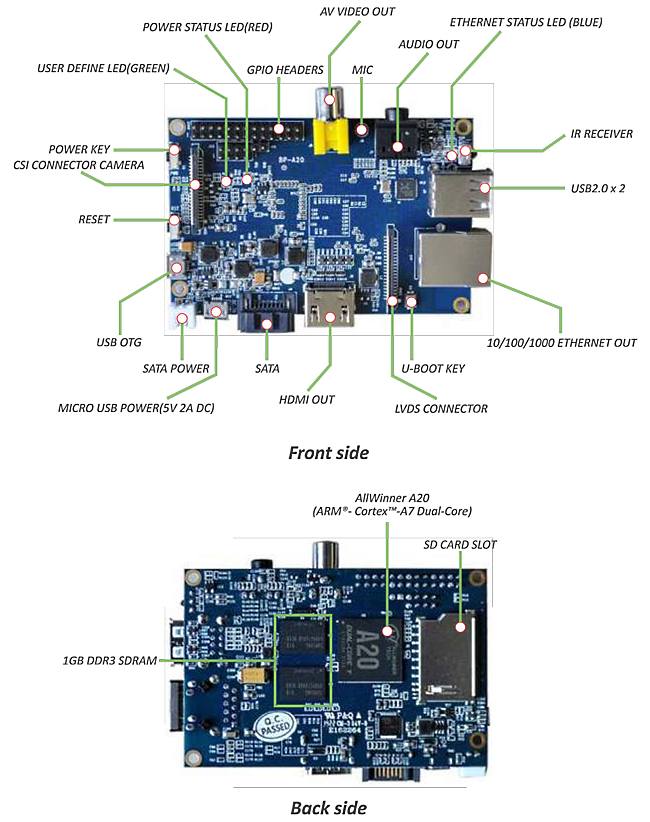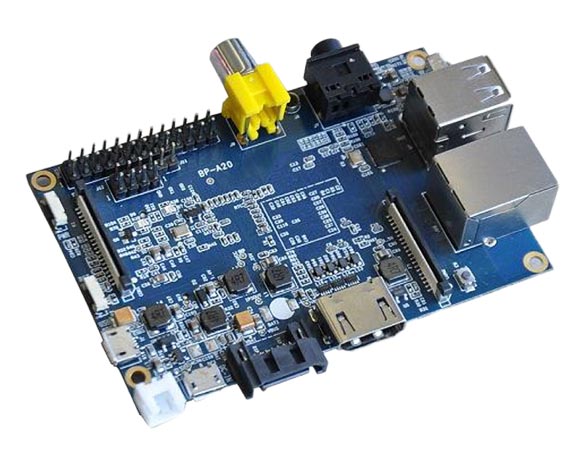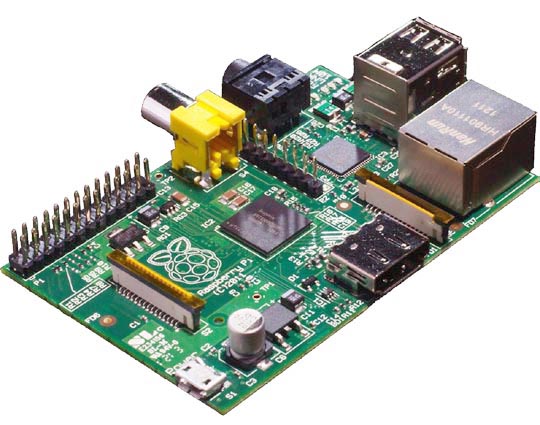By Rob Riemen
EEWEb. Embedded Devrloper
If you have been interested in programming, electronics, or computing in general in the past several years, then you probably have used the Raspberry Pi. It is a wonderful, little piece of hardware that can help you learn how to code. At least, that was the intended use of the Raspberry Pi. With advanced knowledge about electronics and coding, the Raspberry Pi can be turned into more than a coding tutorial. This powerful piece of hardware can be converted into a weather station, a retrogaming device or a touchscreen tablet. The Pi does this by boasting a 700 MHz processor, 512 MB SDRAM, and a dual-core multimedia co-processor. These components allow the Raspberry Pi to be a great embedded single-board computer. But, what if a project required more processing power and more data storage? A BeagleBone Black could be used, or the Raspberry Pi could be upgraded.
It takes a lot of experience to design a circuit board. It takes even more knowledge to be able spin the board, meaning to design and produce a physical copy of a circuit board. So, performing electronic surgery on the Raspberry Pi to upgrade the components is not recommended. LeMaker has taken the difficulty of upgrading the circuit board to create what is called the Banana Pi. The Banana Pi has very similar architecture to the Raspberry Pi except that it is fitted with an AllWinner A20 SoC, which runs at 1 GHz and 1 GB DDR3 SDRAM. The AllWinner processor is actually an A20 ARM® Cortex™-A7 dual core.
 |
| AllWinner A20 SoC. |
Having a dual-core processor gives the Banana Pi twice the processing power of the original Raspberry Pi. The dual core gives the operating system the illusion that the computer has two 1 GHz processors. All of those projects that you could not accomplish with the Raspberry Pi because of computing power? The worry can be eliminated with the Banana Pi. The AllWinner A20 SoC can more than make up for the lack of processing power. Along with this powerful processor, the Banana Pi allows for a 64GB SD card, giving the user the ability to store much more data. These improvements make the Banana Pi a manageable upgrade for an asking price of $50.
So what makes the AllWinner A20 SoC so special? It’s the first dual-core ARM A7 chip. As is the case with modern computer processors, multiple cores help with multitasking. Multiple applications can send and receive data at once, giving the user more power over the tasks a user is planning to accomplish with a project. The ARM A7 processor supports integer division through it’s own hardware instruction. In other ARM based processors, integer division is calculated through software. With the integer division in hardware, this frees up memory space from software instructions allowing the processor to function more effectively. The ARM A7 processor also has 40-bit memory addressing. This allows the processor more bandwidth to access the computer primary storage. This increase in bit addressing allows the processor to complete more tasks in a shorter amount of time.
 |
| Image courtesy of lemaker.org |
Along with a beefier processor, the Allwinner A20 SoC comes with an accelerated graphics processing unit (GPU). This GPU follows along in the footsteps of the main processor and sports a dual-core Mali 400MP2 graphical unit. Along with dual cores, the Mali 400MP2 has 256 KB of level 2 cache. This allows for greater storage of recently accessed information, as this is how the level 2 cache is used. This transfers into faster computing, and in terms of graphical displays, this means the faster rendering of computing intensive graphical units. With this technology, a graphical user interface (GUI) will load very quickly, graphical engines will process more efficiently, and movies or images will load with a higher definition. This GPU was built for the accelerated creation of objects on a screen. With this design, the user is able to run an operating system such as Android or Ubuntu without any of the hiccups that may come with a slower GPU.
Now, what can you do with a little bit more processing power, more RAM, and more storage space? Actually, quite a bit. What use to be a weather station, a retrogaming device, and a touchscreen tablet can become a full-fledge multimedia PC, a general purpose computer, or a modern gaming device. The specs of the Raspberry Pi are no longer limiting. The Banana Pi comes with all of the standard peripherals that a Raspberry Pi has, such as HDMI out, 10/100/1000 Ethernet out, audio out, and GPIO headers.
 |
 |
| Banana Pi versus Raspberry Pi. | |
With such a board, you can turn your home into the Internet of things. By adding sensors in various rooms, and a Banana Pi interfaced to the sensors, you can create a life that is connected to the Internet. This will help you remember your habits, assist with daily functions, and make life easier in general. All this is possible because Banana Pi’s advanced technology. Along with advanced projects, the Banana Pi can run many of today’s modern operating systems. With the addition of a touchscreen, or even a regular monitor, the Banana Pi can fly through operating systems such as Android 4.4 KitKat, Ubuntu 13.01 or even a multimedia OS such as XBMC. But, many of the Banana Pi’s features are comparable to other cutting edge single- board computers.
With all of the single-board computers coming out at Maker’s Fair, at Consumer Electronics Show, and across the Internet, it is hard to find one that will be perfect for any project. The Banana Pi builds on the famous Raspberry Pi, to create a fast, yet inexpensive solution for many electronic projects that need intensive computing. This is all possible because the Banana Pi is an open source. Being one of the first boards to use a dual-core processor, the Banana Pi leads the way into the development of faster and more inexpensive single-board computers. Dual core makes it possible to accomplish many more tasks that the Raspberry Pi cannot. The next generation of single- board computers is here, and the Banana Pi is leading the way.
